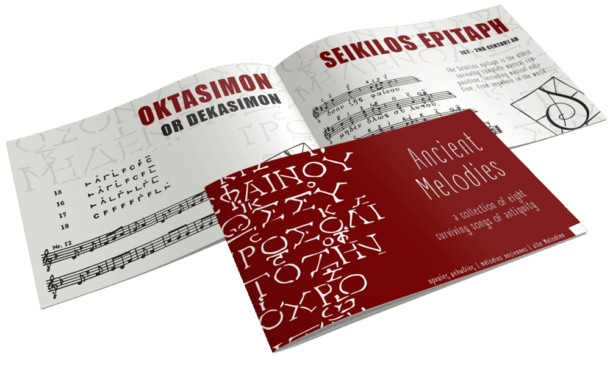
The Only Online Series of Lessons
on How to Play an Ancient Greek Kithara!
According to Michael, “The beautifully recreated replica ancient Greek kithara I am playing, was handmade in modern Greece by the dedicated Lutherios team, as the result of painstaking research in also recreating the highly advanced 2500 year old vibrato mechanism of the ancient Greek kithara. Overwhelming visual evidence of this advanced spring vibrato mechanism can be found in countless ancient illustrations of the kithara, which clearly show inverted ‘U’ shaped spring-like structures below the yoke of the kithara, complete with a balancing mechanism of weights above the springs – presumably to precisely balance the upward push of the springs against the downward pull of the strings.”
Lesson 1
The Basics!
Quoting from Wikipedia:
“In Greek mythology, the Sirens (Greek singular: Σειρήν Seirēn;Greek plural: Σειρῆνες Seirēnes) were dangerous yet beautiful creatures, who lured nearby sailors with their enchanting music and voices to shipwreck on the rocky coast of their island…”
Lesson 2
The Ancient Greek Modes
“With holy voice I call the stars [Astron] on high, pure sacred lights and genii of the sky.
Celestial stars, the progeny of Night [Nyx], in whirling circles beaming far your light,
Refulgent rays around the heav’ns ye throw, eternal fires, the source of all below.
With flames significant of Fate ye shine, and aptly rule for men a path divine.”
– 6th Orphic Hymn, “To The Stars (Astron)”
Lesson 3
Tuning to Just Intonation
“I will sing of Heracles, the son of Zeus and much the mightiest of men on earth. Alcmena bare him in Thebes, the city of lovely dances, when the dark-clouded Son of Cronos had lain with her. Once he used to wander over unmeasured tracts of land and sea at the bidding of King Eurystheus, and himself did many deeds of violence and endured many; but now he lives happily in the glorious home of snowy Olympus, and has neat-ankled Hebe for his wife.
– Homeric Hymn to Hercules The Lion Hearted
Lesson 4
The Epitaph of Seikilos
Lesson 5
The Epitaph of Seikilos
Lesson 6
Block and strum
Lesson 7
Final lesson
This final video in this series demonstrates a wide range of possible improvisatory techniques which can be applied to a solo performance of the famous 2000 year old ancient Greek song, “Epitaph of Seikilos” – discovered inscribed in the alphabetical musical notation of ancient Greece on an ancient Greek burial stone, this 2000 year old song is the only complete piece of music to have survived from antiquity.
For more sheet music to experiment with these lyre playing techniques, please also see my blog:
http://ancientlyre.com/blogs/sheet_music_for_10_string_lyre/
For personal lyre tuition on either Skype or Facebook Chat, please contact me directly:
